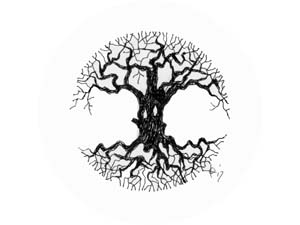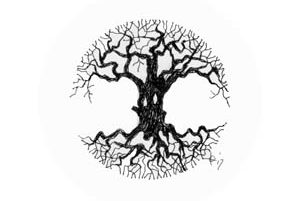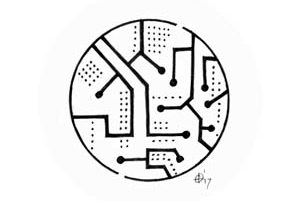Angela Roothaan
November 29, 2016, angelaroothaan.wordpress.com
Philosophy is as such a secular profession, taking the attitude of wonder and reflection towards any phenomena it takes in consideration. Sometimes this is seen to create a tension with the search for wisdom that has been present in philosophical tradition over the ages — a tension which can bring thinkers to take religious, agnostic as well as atheist approaches. Whatever one’s specific approach or subject matter, however, the critical instruments provided by philosophical reflection, allows us to gain fresh insights. Also in matters of bible studies, religious studies and theology.
Two weeks, ago, on the 16th of November, I was one of four speakers who were invited to comment on two newly published books on religion in the Netherlands. Religion in the white, Christian section of society, that is — which sociologically gives a distorted image, of course — because while the traditional white protestant and catholic churches are in constant decline, black migrant churches, as well as mosques and islamic communities are thriving.
The traditional churches, however, see so much decline, the authors of both books think, because European Christianity has emptied itself from most spiritual practices and experiences — having adapted itself to the stifling influence of the Enlightenment and its consequences. For theology these were either a focus on ‘belief’ as confessing something to be true, or on unearthing the historical basis of the bible from a secular perspective. In my contribution to the book presentation, I suggested, in line with an article I published in 2015 (see below for reference), to circumvent the Enlightenment, and reread the gospels as shamanist literature.
Such an approach tunes in with what post-Enlightenment Christians search for, often in non-European religious traditions, to wit: a reevaluation of intuitive knowing, of ritual practice, and religious trust or faith. My own path, which I now call shamanistic, has been inspired by experiences in my childhood that have led me to search to express these three elements in words, in philosophy. One of the most important philosophers who provides a basis for stretching philosophical discourse to that intent is William James (1842-1910), most well known as the founder of the psychology of religion, with his work The Varieties of Religious Experience (1902). He describes there how we live in a tangible, empirical world on the one hand, but experience (sometimes) that this is surrounded and influenced by a wider, spiritual reality.
Building philosophically on the work of James, and having studied anthropologists’ works on shamanism and on the shamanistic Jesus, I came to reread the gospels in a kind of direct manner, detouring the critical reflections that sprang from the heritage of Enlightenment rationalism. Although the term ‘shamanistic’ stems from Siberian language and originally refers to mediators between the everyday and the spiritual world in that region, the term has been globalized in our day, and is used as well for new spiritual movements that open up traditional knowledge for individuals in modern societies, as for spiritual practices of peoples that are still in touch with traditional ways of living accross the globe.
With respect to the gospels, several researchers have attempted to reread them in a shamanist framework. For instance the South African anthropologist of religion Pieter Craffert, who shows in his book The Life of A Galilean Shaman (2008) that shamanistic practices were alive and well in the society in which Jesus lived. Or theologian Marcus J. Borg, who in his Meeting Jesus Again For The First Time (1994), using a Jamesian language, describes Jesus as ‘a spirit person’ – someone for whom the ‘screens of consciousness’ that keep the everyday and the spiritual domain apart, are unusually permeable. And there is the theologian who practices trance journeys himself John J. Pilch, who in his book Flights of the Soul (2011), on spiritual experiences in the bible, describes the testing of Jesus by Satan, as fitting the traditional route of a shaman to be: ‘Jesus demonstrates that he has acquired the necessary ritual skills to deal with and control the spirit world.’ (Pilch 2011, p. 116)
In my article “The ‘Shamanic’ Travels Of Jesus and Muhammad: Cross-cultural and Transcultural Understandings of Religious Experience”, published in 2015 in the American Journal of Theology and Philosophy, I discuss this and other literature and go into some of the shamanistic events in the gospels. To just give some examples, we can read in Luke 4:1-14 that Jesus withstands Satan’s tests in the desert, filled with the Holy Spirit. After passing the test, that proves which of the two spirits, the holy one or the evil one, is strongest, he returns into society with the force of the Spirit. When he subsequently starts to tour the country, and console and heal people in spiritual and physical need, he shows shamanistic qualities all the time. He passes through an angry mob that cannot touch him (protected by the power of the Spirit) in Luke 4: 29-30, and has power over demons according to Luke 4: 33-36. Also in Matthew and Mark do we find a wealth of shamanistic stories, such as Jesus’ expulsion of demons from some possessed persons in Matthew 8:28-34, his healing of a possessed man in Matthew 9:32-34, a possessed girl in Mark 7:24-30, and a deaf and mute man in Mark 7:31-37). This last story, moreover, presents a description of specifically shamanist practices by Jesus, who puts his fingers in the ears of the man, and touches his tongue with his own spittle. Even today we can find practicing shamans to breathe or spit over a patient — as an exhalation or a secretion of saliva are understood to serve as a vehicle for the healing spirit that is called to assistance by the shaman.
In the seventeenth century theologians in Europe turned against the belief in spirits as well as spiritual practices, like the Dutch pastor Balthasar Bekker, who proposed to read the bible in a rational manner in his work De betoverde weereld. Although his motive, to get people to take more responsibility for their own moral agency, instead of blaming their evil actions on possession, was in line with the teachings of Jesus too, who stress that those cured should turn their lives around toward the good and away from evil — the effect of centuries of rationalist theological works has been that European Christianity has lost its appeal for many people, as they don’t find much spiritual appeal or healing there. So in my talk at the book presentation I proposed that, next to the inspiration the ex, or post-christians get from non-European religions, they might as well try to read ‘around’ the Enlightenment, and try to let the gospel stories about the shamanistic Jesus inspire them. This Jesus makes trance journeys, associates with spirits, heals people from his shamanistic inspiration, and shows them ways to more free, loving and just ways to live.
———-
Angela Roothaan | November 29, 2016 at 10:31 am | Tags: Balthasar Bekker, De betoverde weereld, Holy Spirit, Jesus, Multireligiosity, Post-Enlightenment Theology, Shamanism, Shamanistic Jesus, Spirits, William James | Categories: Critical Studies of Religion, Ghosts/Spirits, Uncategorized | URL: http://wp.me/p3luEU-Oy










